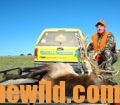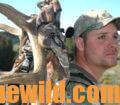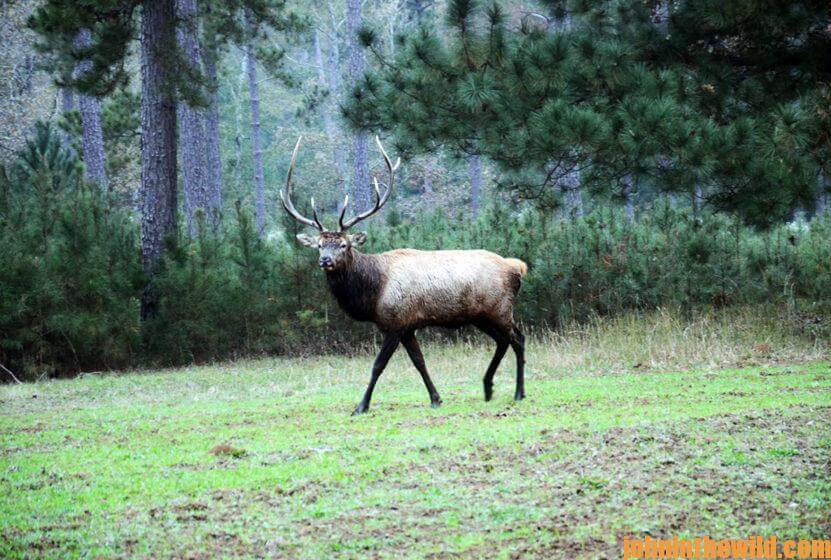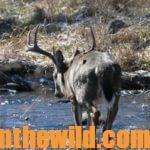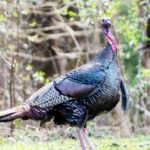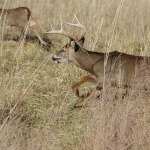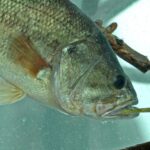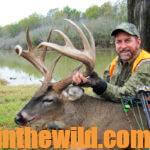Editor’s Note: J.R. Keller has lived in Colorado most of his life and has had a love for the outdoors, which he’s acquired from his father, while accompanying him on hunting and camping trips. With Keller’s vast knowledge of hunting elk, turkey, mule deer and waterfowl, he’s appeared on The Outdoor Channel, TNN Outdoors and numerous outdoor TV shows and teaches seminars across the country. Keller’s philosophy is that knowledge is the most-important piece of equipment a hunter takes into the woods.
One of the mistakes I’ve seen elk hunters make in the past is being over-equipped. They’ll carry a pack with enough stuff for a week. Then if a hunter takes an elk, he only can carry a small portion of the elk out because he has that big pack. I elk hunt as lightly as possible, since in many areas, we have to climb to higher elevations, hike all day and possibly move quickly to locate a bull. Elk hunting can be physically challenging, even if you’re only wearing a pair of shorts, a t-shirt and boots. But when you’re wearing hunting clothing, which may be insulated, and carrying a heavy pack, the fun ends, and the misery begins. I always suggest a hunter pursue elk with as little gear as possible.
I put a lot of thought into the equipment I take with me when I’m elk hunting. I want to only carry the items I’ll need in an emergency. I don’t want to get loaded-down with too much gear. When you’re considering frame packs, don’t skimp on the one you buy. I like a light pack with a fairly-large shelf on the back where I can sit the meat. A quality frame pack will have a sturdy waist belt. If a person isn’t accustomed to hunting in the West and carrying a load on his back, he may not understand that a properly-built frame pack will allow the majority of the weight to sit on his waist in the center of his back. The shoulder straps keep that weight in the proper position, and you’re not actually carrying the meat with the shoulder straps. If that weight isn’t sitting in the center of your back, and the majority of the weight isn’t on the waistband, you either have the wrong type of pack, or you’re wearing that pack incorrectly.
A good waistband that you can pull really snug to your waist is the most-critical part of a quality frame pack, because where that weight is positioned and held determines how easily you can carry a large amount of meat out. Because I’ve hunted with a frame pack most of my life, I usually can carry 60 to 70 pounds at a time without much trouble. But if you haven’t hunted carrying a frame pack before, I suggest you not start out carrying that much weight.
Another important element of a good frame pack is that it has a sternum strap that pulls the shoulder straps in toward the center of your body and keeps those shoulder straps from sliding off your shoulders. The sternum strap should fit snugly, but not too tightly.
My Top Must-Have Items for Elk Hunting
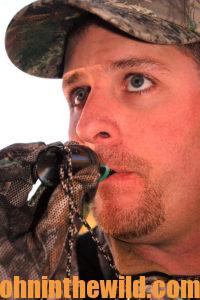 Elk Calls: I carry numbers of various calls because I never know which call will make a bull elk respond and/or come into me. Like a fisherman takes a wide variety of lures with him when he goes fishing, since he never knows which lure will cause the fish to bite, elk hunters need to carry a wide variety of calls. You never know which call will tweak the bull’s interest and get his attention. On different days, bulls will respond differently to diaphragm calls than they will to bugle calls or even to various types of cow calls. Click here to see the best elk bugle tube.
Elk Calls: I carry numbers of various calls because I never know which call will make a bull elk respond and/or come into me. Like a fisherman takes a wide variety of lures with him when he goes fishing, since he never knows which lure will cause the fish to bite, elk hunters need to carry a wide variety of calls. You never know which call will tweak the bull’s interest and get his attention. On different days, bulls will respond differently to diaphragm calls than they will to bugle calls or even to various types of cow calls. Click here to see the best elk bugle tube.
When I start working a bull with my calls, I always put a diaphragm elk call in my mouth because I never know when a bull will come-in unexpectedly. I may need to blow that diaphragm call to stop the bull and get off a shot. By having the diaphragm call in my mouth, I don’t have to reach into my pocket, choose a call and then blow it. Rather, I just roll it into position with my tongue and blow it. A diaphragm call is a must-have call for the elk hunter because your hands are free, when and if you need to use them. Too, you can use the diaphragm call to create almost any type of elk vocalization you need to make.
Windicator: I like powder-style windicators to not only see the direction the wind’s blowing when I first puff it out, but also to determine the direction the wind’s traveling 10-20 yards past where you’ve first blown that little cloud of smoke. Continually knowing wind direction is critical to successful elk hunting. Elk have very-keen noses. So, I always use the Scent-A-Way products to control, manage and eliminate human odor. I still hunt into the wind. I never want to approach a bull from upwind. When I spot an elk, I call him upwind of me. But often a bull will circle your calling position and move in downwind. Always hunt into the wind. Try to get the bull to come to you from upwind, which is why having a windicator is critical to an elk hunter’s success.
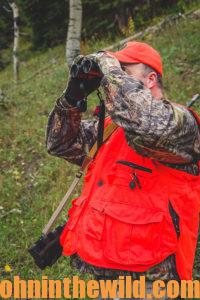 Binoculars: I take a pair of 10×42, small, compact easy-to-carry and accurate binoculars with me anytime I go elk hunting. I like the 10X binoculars because when hunting elk in the West, you have to be able to spot elk at long ranges. I need binoculars that will allow me to see across a canyon and determine the size of the bull before I decide to hunt him. Before I make the decision to make a stalk, climb over one or more mountains or race across a ridge top, I want to make sure the bull I’m hunting is the one I really want to take. I like the 10×42 binoculars better then 10x50s because 10x50s are somewhat big and cumbersome, when you’re traveling up and down mountains.
Binoculars: I take a pair of 10×42, small, compact easy-to-carry and accurate binoculars with me anytime I go elk hunting. I like the 10X binoculars because when hunting elk in the West, you have to be able to spot elk at long ranges. I need binoculars that will allow me to see across a canyon and determine the size of the bull before I decide to hunt him. Before I make the decision to make a stalk, climb over one or more mountains or race across a ridge top, I want to make sure the bull I’m hunting is the one I really want to take. I like the 10×42 binoculars better then 10x50s because 10x50s are somewhat big and cumbersome, when you’re traveling up and down mountains.
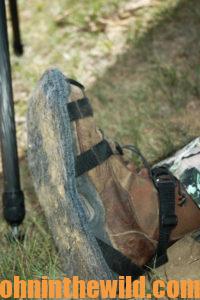 Boots: You need a quality pair of boots for elk hunting with very-good ankle support. Generally an elk hunter will walk up and down rough terrain, so he needs boots that will support and protect his ankles. You also need quality soles on your boots to provide traction on rocks and loose dirt, yet not fill-up with mud when you cross creeks or wet bottoms. Another feature critical in choosing a pair of boots for elk hunting is comfort. You must have a pair of boots you’ve worn a lot and that are comfortable for your feet, ankles and legs.
Boots: You need a quality pair of boots for elk hunting with very-good ankle support. Generally an elk hunter will walk up and down rough terrain, so he needs boots that will support and protect his ankles. You also need quality soles on your boots to provide traction on rocks and loose dirt, yet not fill-up with mud when you cross creeks or wet bottoms. Another feature critical in choosing a pair of boots for elk hunting is comfort. You must have a pair of boots you’ve worn a lot and that are comfortable for your feet, ankles and legs.
The worst thing an elk hunter can do is bring a new pair of boots to elk camp. If you buy new boots for an elk hunt, start wearing those boots long before you go to elk camp. If you don’t break the boots in before you’re elk hunting, you may return to elk camp the first day of the hunt with blisters and sore feet. Your entire hunt will be miserable, whether or not you take an elk.
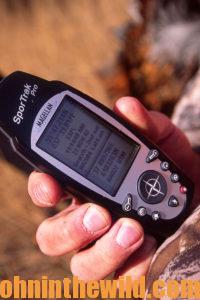 Hand-Held GPS receiver: I use my hand-held global positioning system (GPS) receiver often, especially for marking elk wallows, water holes, elk trails and easy routes to reach the spots where I find elk. Many times you’ll be walking to the place you want to hunt before daylight or returning to camp after dark. By marking the easiest route to the elk and back to camp, navigating after dark will be much easier. A GPS is especially effective and helpful when you have an elk down. Then you can mark the spot where the bull went down and see the shortest route on your GPS to your truck to return to camp. Also, once you reach the truck or the camp and gather your frame pack and other gear needed to butcher your elk and get the meat and the trophy out, you can see the shortest route to the animal and go straight to him. As GPS technology continues to improve, I suggest you buy the best GPS available at the time you plan to hunt.
Hand-Held GPS receiver: I use my hand-held global positioning system (GPS) receiver often, especially for marking elk wallows, water holes, elk trails and easy routes to reach the spots where I find elk. Many times you’ll be walking to the place you want to hunt before daylight or returning to camp after dark. By marking the easiest route to the elk and back to camp, navigating after dark will be much easier. A GPS is especially effective and helpful when you have an elk down. Then you can mark the spot where the bull went down and see the shortest route on your GPS to your truck to return to camp. Also, once you reach the truck or the camp and gather your frame pack and other gear needed to butcher your elk and get the meat and the trophy out, you can see the shortest route to the animal and go straight to him. As GPS technology continues to improve, I suggest you buy the best GPS available at the time you plan to hunt.
Scent Elimination: Hunting into the wind and using Scent-A-Way products are critical keys to having a successful elk hunt. I like to constantly spray-down my clothing when I’m hunting elk and wipe down my face, underarms, neck and hair. The wipe-down will cool you off, reduce your odor and prepare you for the next stalk.
Gear Pack: The elk hunter carries a lot of gear, and even though you want to hunt as lightly as possible, you’ll still need a quality pack that’s comfortable. I enjoy using a pack with plenty of pockets in it to keep things organized. When I’m calling a bull, whether for myself or someone else, I want to be able to set my pack down before I call and have all my equipment readily available. I want to know where my calls, Windicator, knife and any other equipment I may need are stored. I don’t want to have to dig through my pack searching for equipment. I also carry zip ties in my pack because they’re handy for tagging an animal or putting back together equipment that breaks or needs to be attached to something. I take field-dressing gloves with me, safety equipment and the tools I may need when I’m hunting an elk. In the truck, I’ll have a frame pack designed for carrying-out meat, so that the weight I’m carrying sits on my hips and not on my shoulders or my back. Then I’m better balanced and can carry the load easier. But the frame pack isn’t the pack I take hunting. I want a smaller, lighter, pack with many pockets for hunting.
A Quality Knife: I always carry two knives, as well as a sharpening stone in my pack. When I begin to cape and quarter an elk, I want to continue the process as long as I can before I have to sharpen my knives. Then if I have to stop and sharpen my knives, I can sharpen them at the same time, which speeds-up the caping and the quartering process.
Flashlights: I prefer to have two flashlights plus batteries in my pack for several reasons. Often the person I’m hunting with doesn’t have a flashlight, so if I have two, he can use one of them. I turn the batteries around backwards in my flashlight because many times a flashlight can get turned-on in your pack. If the batteries are in your flashlight the way they’re supposed to be, and your flashlight gets turned-on in your pack without your knowledge, the batteries will be drained of their energy. Then you’ll have a non-functional light. However, if you turn your batteries around, even if the flashlight switch is bumped accidentally, the flashlight won’t turn-on and use-up your batteries. I use this same system of reversing my batteries in my GPS unit when I’m not hunting. I’ve learned that batteries always go out when you need them the most. Then you have to go through the process of finding extra batteries and changing them in the dark. However, if you have a second flashlight, you can use the second flashlight to locate your extra batteries and change them out on your first flashlight.
Scent Wafers: I wear and carry scent wafers with me when I’m elk hunting and a bottle of fresh elk urine. Then when I set-up and prepare to call-in an elk, I’ll spray the area around my set-up with that elk urine. I use the fresh elk urine as a windicator as the elk comes into my calling. If the wind switches while the bull’s coming in, the bull will smell the elk urine before he smells any human odor. When I get out my calls and prepare to call to the bull, I want that fresh elk urine right beside me. Then when I mist it, I can keep up with wind direction. If an elk comes-in downwind, he’ll smell the cow he believes has been calling to him, reinforcing that there’s a cow elk calling from the spot where he’s heard one.
Essential Kit: I have bad allergies, so I carry eye drops and several kinds of allergy medicine, as well as Vaseline for my lips in my essential kit. Also in this kit, I’ll have Band-Aids, matches, a lighter, candy bars and a tube of disinfectant. You’ll be surprised at how good a bandage can feel with a little disinfectant on it, if you get cut or nicked climbing on rocks or going through brambles and briers.
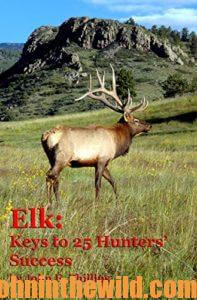 To learn more about hunting elk successfully, check out John E. Phillips’ book, “Elk: Keys to 25 Hunters’ Success,” available in Kindle, print and Audible versions at https://amzn.to/2IDszQk. You may have to copy and paste this click into your browser. (When you click on this book, notice on the left where Amazon allows you to read 10% of the book for free).
To learn more about hunting elk successfully, check out John E. Phillips’ book, “Elk: Keys to 25 Hunters’ Success,” available in Kindle, print and Audible versions at https://amzn.to/2IDszQk. You may have to copy and paste this click into your browser. (When you click on this book, notice on the left where Amazon allows you to read 10% of the book for free).

